Articles I have published
This page contains links to articles that I have published to various business analysis sites and to linkedIn. In particular, many of these articles can be viewed on the Modern analyst website. A great source for business analysis information. |
Using Agile In A Quality Driven Environment Clicking on the image opens a PDF document containing an overview of my book. |
 |
Analysis Through Pictures Clicking on the image opens a copy of my book that can be downloaded for free from lulu.com. MS Visio no longer supports the modeling features that are demonstrated by the process described in the book. The model in this book was created using MS Visio v2007, however there are many other available tools that support this process, for the same cost as Visio or less. Enterprise Architect and Visual Paradigm are 2 common modeling tools that be substituted for Visio 2007. |
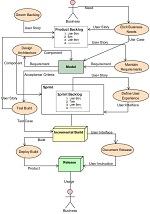 |
Agile Through Pictures Clicking on the image opens a presentation containing an overview of the Quality with Agile process. |
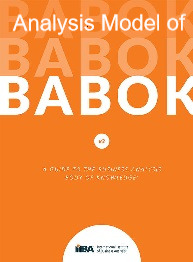 |
Model of BABOK Version 3 The Business Analysts Body of Knowledge is a guide to business analysis, which includes standards, guidelines, tools, activities, techniques and core competencies for business analysts. Version 3 was released in 2015 and expands the scope of business analysis, providing essential direction and support for practitioners in areas such as agile, business intelligence, information technology, business architecture and business process management. There is a wealth of information contained within this book. It contains a framework of tasks, techniques, guidelines and artifacts, but it is organized in a manner that it makes it difficult to extract only the information that is needed for a specific situation. Clicking on the BABOK cover image will open a document that shows an object-oriented model of the BABOK content organized by artifacts. It shows how inputs, outptus, tasks, techniques, workers, tools and guidelines that are associated with each artifact. This alllows the reader to view only the information relevant to their current situation. A presentation containing an overview of this work is located here An article that demonstrates the notation and organization of the model is located here |
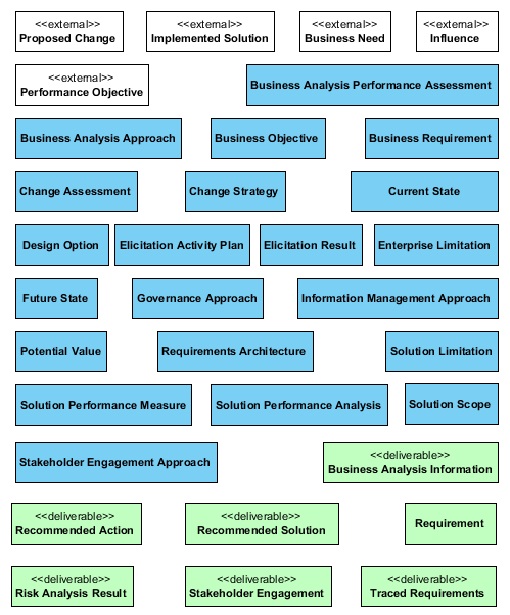 |
BABOK Artifacts Mapped To Artifacts Clicking on the image opens a document that shows how BABOK artifacts are related to each other. For each artifact, 4 diagrams show:
|
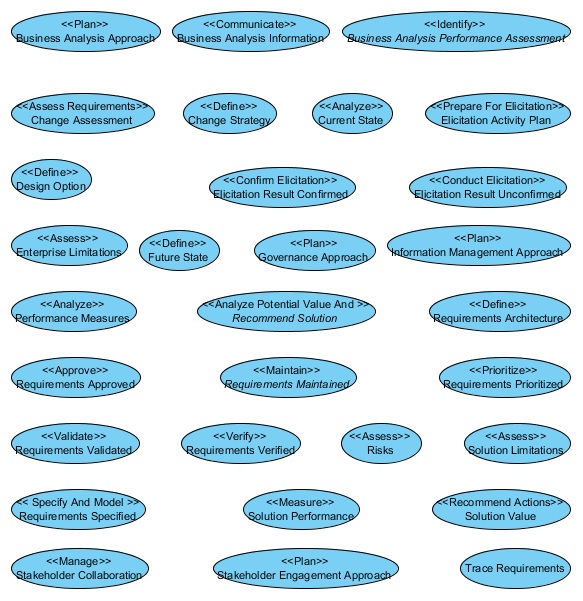 |
BABOK Tasks Mapped To Artifacts Clicking on the image opens a document that maps BABOK tasks and elements to analysis artifacts and their attributes. The intention of this article is to identify and specify the artifacts listed in the BABOK. These artifacts are listed within the Outputs section of the BABOK tasks. Outputs are described by a paragraph of text within each task. In this article I attempted to expand on these descriptions by adding detail to their content. |
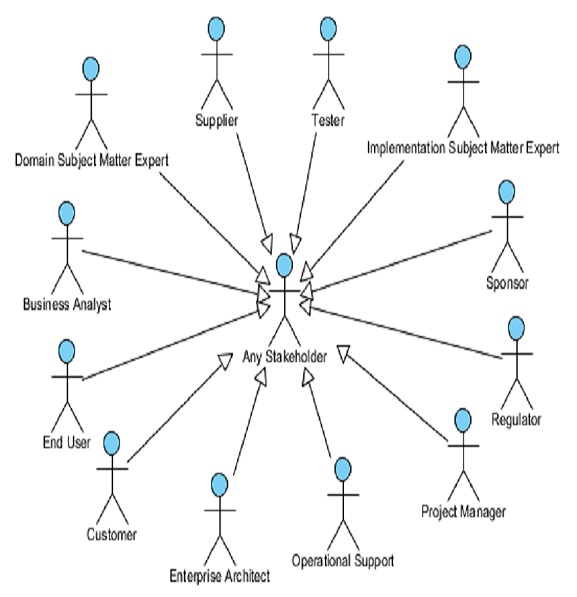 |
BABOK Stakeholders Mapped To Artifacts Clicking on the image opens an article that shows a mapping between BABOK stakeholders and artifacts. The intention of this article is to demonstrate the artifacts that stakeholders contribute to and artifacts that those stakeholders consume. |
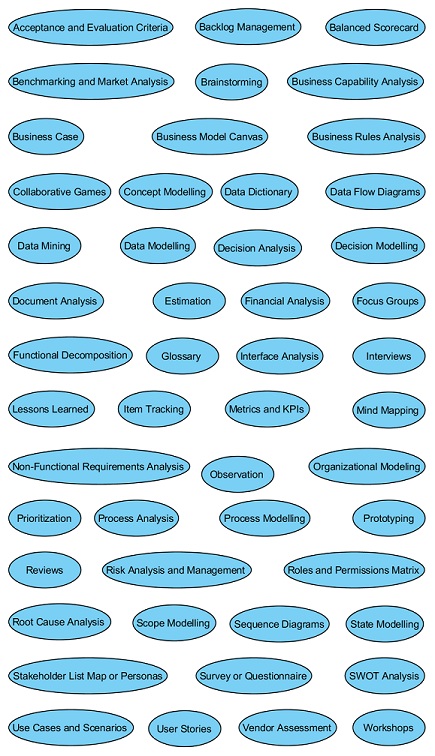 |
BABOK Techniques Mapped To Artifacts Clicking on the image opens an article that shows a mapping between BABOK stakeholders and artifacts. The intention of this article is to demonstrate the artifacts that stakeholders contribute to and artifacts that those stakeholders consume. |
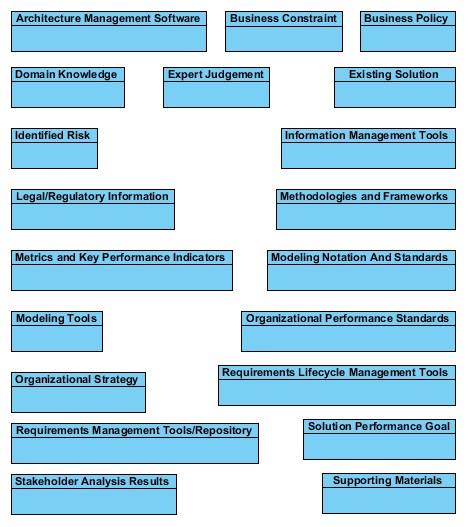 |
BABOK Guidelines and Tools Mapped To Artifacts Clicking on the image opens an article that shows a mapping between BABOK stakeholders and artifacts. The intention of this article is to demonstrate the artifacts that stakeholders contribute to and artifacts that those stakeholders consume. |
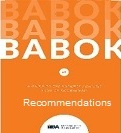 |
BABOK Recommendations Clicking on the image opens a document containing a number of recommendatins for improving my understanding of the BABOK.
Let me know what you think or if you have any additions to these suggestions. |
 |
Models And Diagrams I see the terms 'model' and 'diagram' used interchangably. This is especially true when discussing computer aided software engineering (CASE) tools. I find that using distinct definitions for these terms can save a lot of confusion when talking about business and software processes and architecture. Clicking on the Lego house diagram opens an article in which I demonstrate various models and diagram types and the benefits of their use. |
 |
Analysis of a Jigsaw Puzzle Clicking on the jigsaw puzzle image will open a presentation that I use to introduce readers to the benefits and complexity of requirements analysis . |
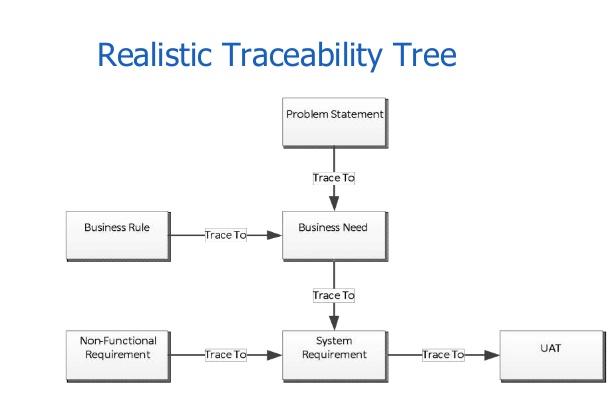 |
Requirements Management and Traceability Clicking on this image will open a presentation that I delivered to the IIBA in September 2015, about requirements traceability. |
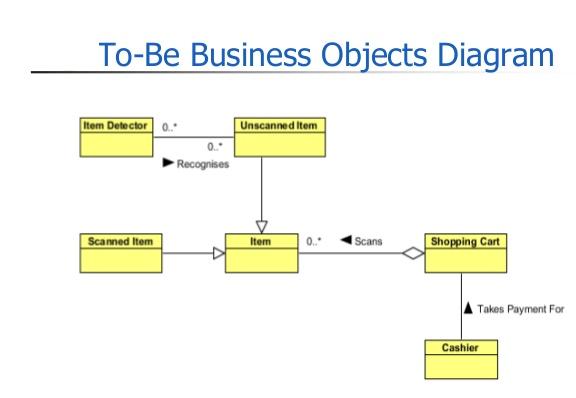 |
Shopping Expedition Part 1 Clicking on the business objects image will open part 1 of a multi-part series of presentations about improving the average shopping process. This presentation describes a business model of a typical shopping expedition and presents ideas for improving the process. |
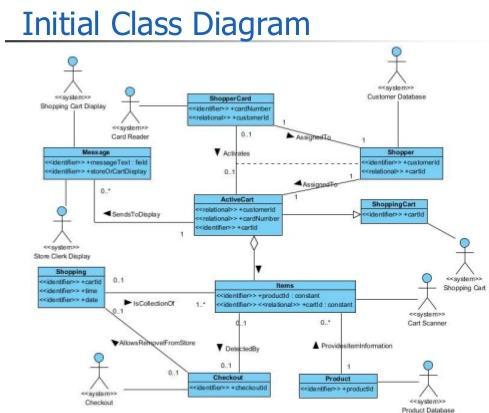 |
Shopping Expedition Part 2 Clicking on the class diagram image will open part 2 of a multi-part series of presentations about improving the average shopping process. This presentation describes a logical model for systems that could be used to improve the shopping process. |